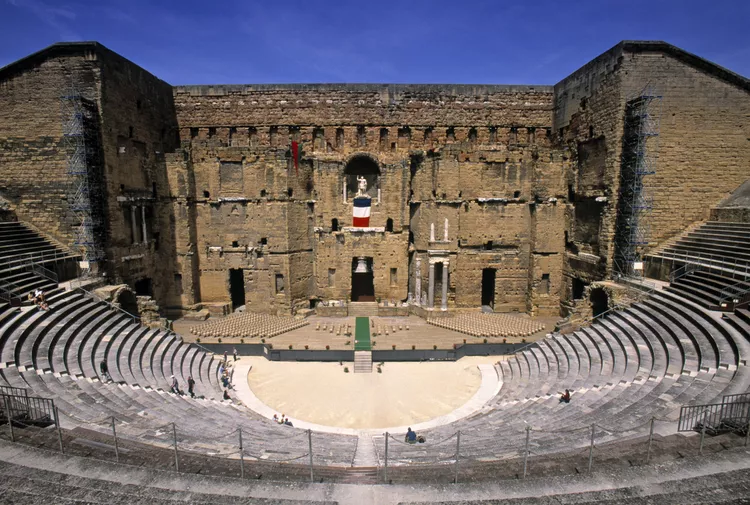Summary
Orange, France is a charming town with a population of approximately 28,000, steeped in Roman history within the Vaucluse department in southern France, located 21 kilometers north of Avignon. This picturesque locality is renowned for its remarkably preserved Roman Theater and warrants at least a night of exploration for tourists; however, a day trip from Avignon will suffice for those looking to briefly admire the town.
Getting to Orange
By Train: Reachable via the Gare d’Orange located on Rue P. Semard, Orange is conveniently serviced by trains from Arles, Avignon, Montelimar, Valence, and Lyon. Moreover, car rentals are available at the station, along with nearby hotel accommodations.
By Car: Orange is situated east of the A7 Autoroute, with the A9 Autoroute from Nimes, La Languedocienne, intersecting the A7 near Orange. Therefore, navigating by car is equally feasible.
For navigation, refer to this Google Map of the area around Orange.
What to See and Do in Orange
The primary attractions in Orange include the spectacular Roman Theater and the Triumphal Arch, both dating back to the reign of Augustus. The Roman Theater, recognized as a UNESCO World Heritage site since 1981, hosted the Chorégies d’Orange Music and Opera Festival every summer. Interestingly, during the Middle Ages, small houses were built inside the theater, which persisted into modernity and hindered its restoration. Nonetheless, these structures likely protected the theater from being quarried for new housing.
For enthusiasts of Roman archaeology, the excavations of the nearby Roman Temple are fascinating. Additionally, a visit to the Musée Municipal on Rue Roche is recommended, featuring numerous artifacts from local excavations, including significant fragments of a property survey map carved into marble, which served as a tool for property taxation.
The Orange Cathedral, known as Cathedral of Notre Dame de Nazareth, showcases Romanesque architecture and was built upon earlier structures from the 4th century. Inside, visitors can observe various paintings and Italian frescoes. The cathedral has oscillated between religious affiliations, having been sacked by Huguenots in 1562 and temporarily converted to a Protestant church, before being returned to Catholic control 22 years later. Following the French Revolution, it served as a temple devoted to the “Goddess of Reason,” but resumed Catholic practices after the Revolution concluded.
Don’t miss the vibrant weekly market held every Thursday on Rue de la Republique, where you can immerse yourself in local culture and atmosphere.
Staying in Orange
For budget-friendly accommodation, the two-star Hôteld de Provence – Orange, located at 60 Avenue Frederic Mistral near the Gare d’Orange railway station, offers convenient options for travelers, along with free parking for those arriving by car. For proximity to the theater, consider the two-star Hotel Saint-Florent, which is just a stone’s throw away.
Approximate Distances to Attractions Outside of Orange
- Avignon – 21 km
- Chateauneuf-du-Pape (wine country) – 8.9 km
- Gigondas (wine) – 15.2 km
- Pont du Gard – 31 km
Other Provence Attractions Near Orange
The Vaucluse department offers a wealth of attractions to explore, including the famed Luberon, while the charming town of St. Remy lies just south of the department border. Consequently, both provide excellent opportunities for further exploration and adventure in this beautiful region.





